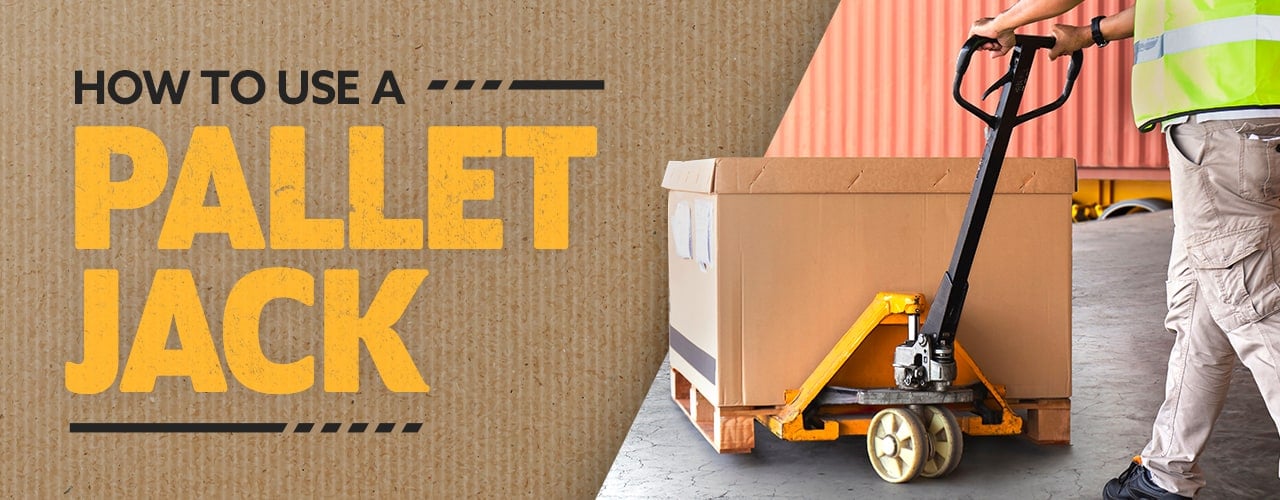
Pallet jacks are a common sight in industrial environments where pallets and skids are used to transport loads to different warehouse locations. They’re especially useful for small businesses and warehouses because they’re more affordable than forklifts and they don’t require a special license for operation. Pallet movers are fairly easy to use after a quick tutorial. We created this guide to help you operate a manual pallet jack safely and effectively.
Shop All Pallet JacksUsing a Pallet Jack Safely
Watch our video to learn how to operate a pallet jack safely.
What Is a Pallet Jack?
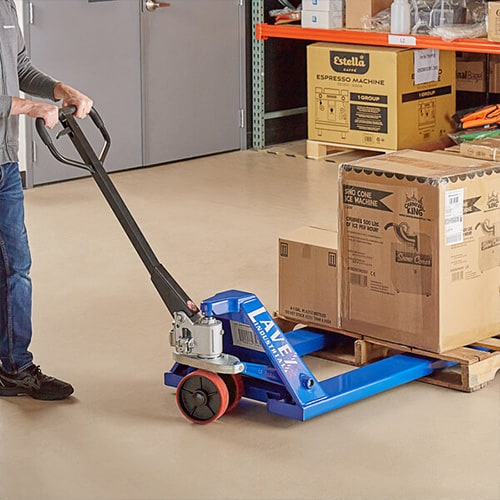
First of all, what is a pallet jack? A pallet jack, also called a pallet truck, pallet mover, or hand jack lift, is a piece of material handling equipment that utilizes a hydraulic pump and two forks to lift and transport pallets. Manual pallet jacks require no electricity and are steered by hand. There are also battery-powered electric pallet jacks that do require a charge before use. If you own a warehouse or fulfillment center, pallet jacks are essential for loading, unloading, and storing pallets.
Manual vs Electric Pallet Jacks
The difference between a manual skid jack and an electric model is that manual pallet jacks rely solely on manpower to push or pull the load, instead of a battery. It takes physical force to move a manual pallet jack. This adds to the labor involved, but it also has benefits, especially for smaller warehouses with less inventory. Manual pallet jacks can be more convenient than electric pallet jacks because workers don't need certification to operate the equipment. According to OSHA, any power-operated equipment requires certification before use, and this includes electric pallet trucks and forklifts.
If you operate a large, high-volume business, electric pallet jacks might be the better choice because they cut down on labor. For small warehouses, construction sites, and even grocery store stockrooms, a manual pallet jack is a convenient option.
Parts of a Pallet Jack
Before you learn how to operate a manual pallet jack, it’s useful to know the important parts so you can understand how to move pallets.
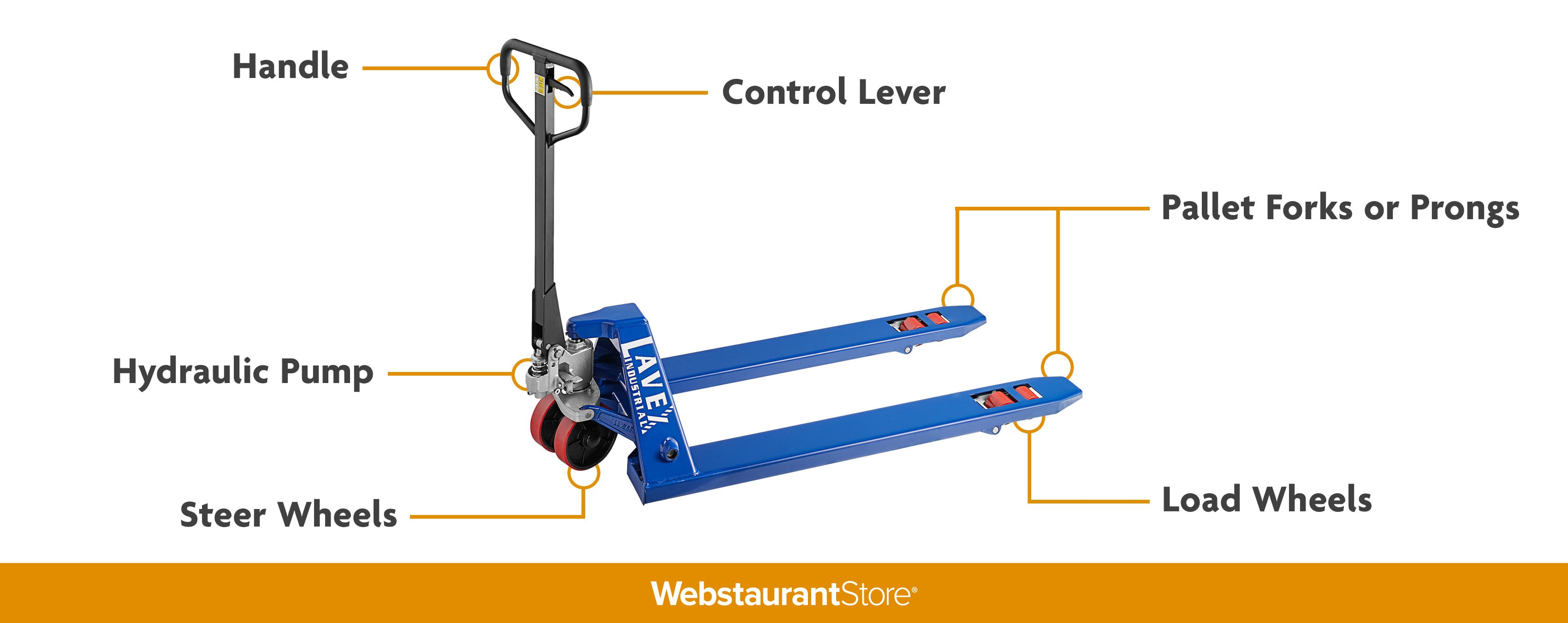
- Control Lever - The control lever is a small bar located on the pallet jack handle that can be moved into the up, down, or neutral position.
- Handle - The handle is used for steering and raising the pallet jack forks.
- Hydraulic Pump - The hydraulic pump is located at the base of the handlebar and provides the pumping action that raises and lowers the forks.
- Steer Wheels - Two large steer wheels below the handlebar maneuver the pallet jack where it needs to go.
- Forks or Prongs - Two long forks are designed to fit inside pallets so they can be lifted.
- Load Wheels - The load wheels underneath the pallet forks help them slide into place.
How to Operate a Pallet Jack
Maintain warehouse safety by following our step-by-step instructions to operate a manual pallet jack:
1. Learn How to Use the Control Lever
Understanding how to use the control lever is the key to learning how to move a pallet. Find the lever on the handle and familiarize yourself with the three control positions:
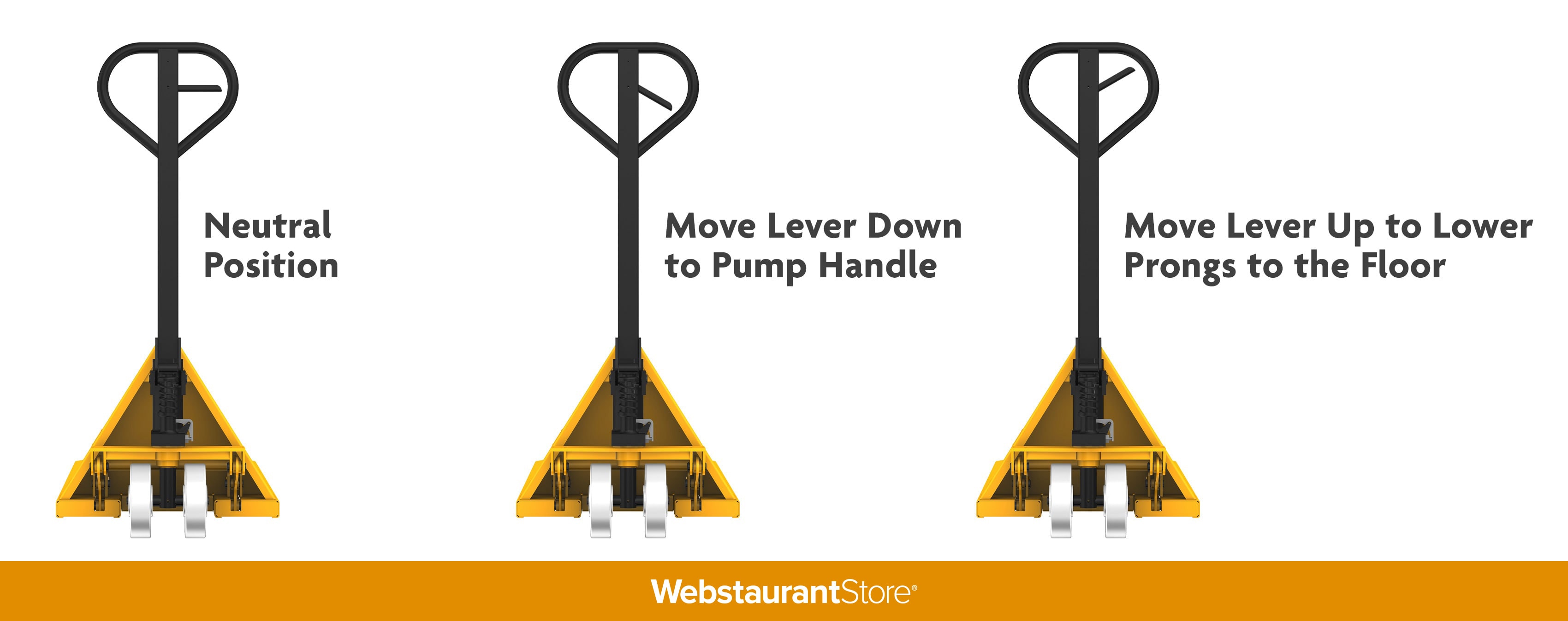
- Neutral Position - When the lever isn’t activated, it’s in the neutral position. Put the lever into neutral position before you move the pallet jack.
- Down Position - Move the lever down to activate the hydraulic pump. You can now pump the handle towards you to raise the pallet forks. Use this position when you pick up a pallet.
- Up Position - Pull the lever up to lower the pallet to the ground. Use this position when you need to drop the pallet into position.
2. Move the Pallet Jack Into Position
With the control lever in the neutral position, steer the pallet jack directly in front of the pallet you want to move. Make sure the prongs line up with the fork openings of the pallet. Pull the control lever up to lower the prongs all the way to the floor and guide them inside the pallet. Make sure the forks are centered and the pallet is stable before lifting.
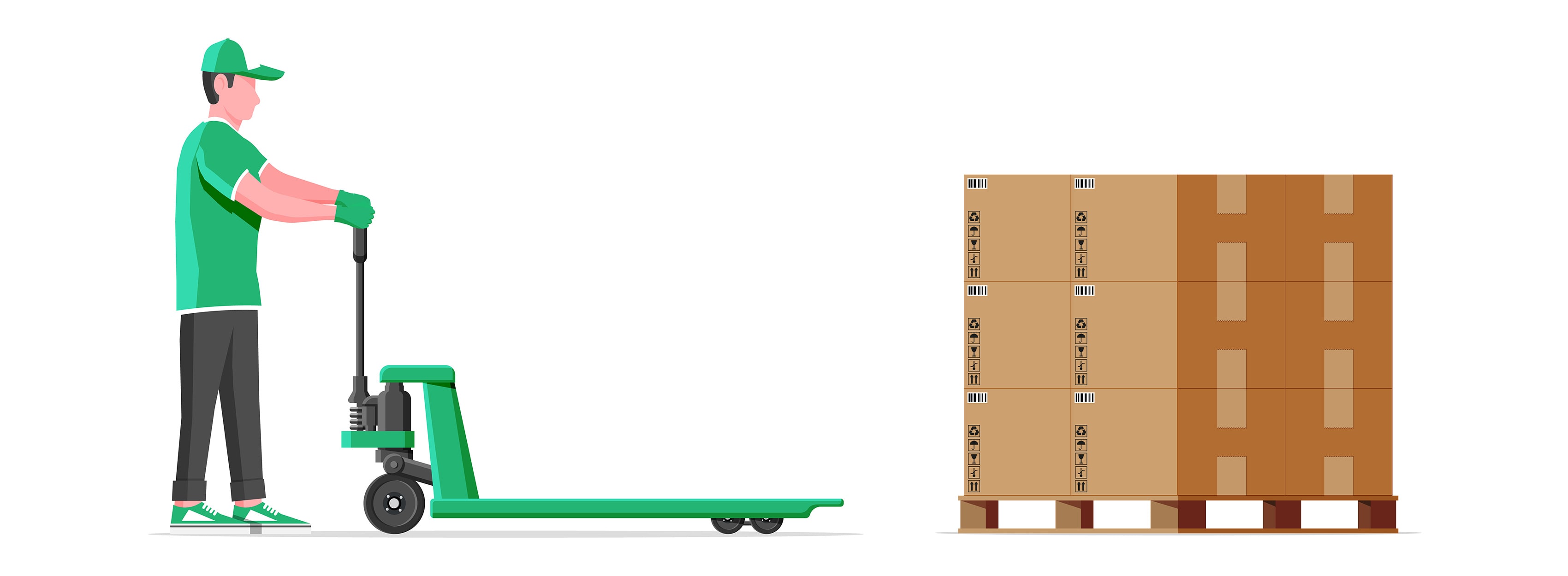
3. Pump the Handle to Raise the Pallet
With the pallet jack forks inside the pallet, engage the control lever by pressing it down. Now you can pull the handle towards you in a pumping motion to “jack” up the pallet. Once the pallet is raised off the floor, move the control lever back into neutral position and you are ready to transport the pallet. Be careful not to raise the pallet too high off the ground because this will affect the center of gravity and make the pallet unstable.

4. Transport the Pallet
Push the pallet wherever you need it to go. Pushing is easier than pulling, but you may need to pull the pallet jack at times to get it into the correct position. When you are ready, pull the control lever into the up position to drop the pallet to the floor. Slip the control lever back into neutral position and pull the forks free of the pallet. Before you move the pallet jack again, put the lever into the down position and pump the handle to raise the forks slightly off the ground. This will help you avoid any obstacles.
5. Lower the Pallet and Store in a Secure Location
If you are finished using the pallet jack, make sure to store it in a secure location. When not in use, keep the forks lowered to the ground. Pallet jack stoppers can be installed in your parking area to prevent the equipment from rolling or shifting.
Pallet Jack Safety
Just because a manual pallet loader can be operated without certification, it doesn't mean there aren't potential hazards. Always refer to the operating manual for your equipment and train employees to use the pallet jack safely. Here are some pallet jack safety tips to keep in mind:
- Inspect and Test the Pallet Truck Before Use - Check out the wheels, the forks, and give the hydraulic pump a test run before moving the pallet jack. If there is an issue with the equipment, it's best to know before possibly losing a loaded pallet or damaging merchandise.
- Move Slowly and Carefully - Injuries often occur when the operator tries to whip or turn the pallet jack too quickly. Take turns at a slow pace and keep your core stabilized.
- Don't Exceed Load Capacity - Every pallet truck has a load capacity rating. Make sure that you aren't exceeding the capacity by lifting pallets that are too heavy.
- Steer Clear of Slopes and Inclines - Pallet jacks are not meant to be used on inclines.
- Keep the Control Lever in Neutral Position When Moving - You can prevent the forks from accidentally shifting up or down by keeping the control lever in neutral position when you're on the move.
- Always Store the Pallet Truck with Forks Down - After parking your pallet mover in a safe place, always lower the forks to the ground. Raised forks are a tripping hazard.
- Move the Pallet Truck with Forks Up - While you're moving a pallet jack with no load, keep the forks raised off the floor an inch to avoid hitting any obstacles.
Pallet jacks offer a quick, convenient method of transporting skids and pallets around your work area. Keep your employees safe by reviewing our pallet jack moving instructions and safety tips. Teach them common safety terms so they can assess threats and respond to crisis when working with the pallet jack.





